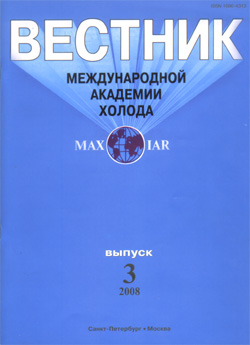
Cod liver and its fat in multicomponent food technology

Annotation
Providing the population with the full-grade meal including foods containing ω-3 polyunsaturated fatty acids (PUFA) is a very actual problem. The new technology of complex cod liver processing for food purposes using microwave treatment is developed in Murmansk State Technical University. Blanched semi-finished product and liver semi-finished product are obtained. The methods of experimental planning, the statistic data analysis, chemical and microbiological methods are used in these researches. The frozen storage conditions (for 6 months at –18 ºС) of the blanched semi-finished product are investigated. The regression dependencies of QMAFAnM on the acid number and storage time on the quantity of the separate microorganism groups were obtained. Chemical and microbiological parameters were found to be within the acceptable limits. Polyunsaturated fatty acids content is 30,8 % of total fatty acids content (including 25,2 % of ω-3 PUFA). It was found that the freezing of the microwave-processed semi-product prepared from the frozen cod liver is difficult due to the deterioration of sensory characteristics, whereas the chemical and the microbiological parameters remain within acceptable limits. The series of foodstuffs based on the cod liver oil extracted during microwave treatment (32,7 % of total fatty acids content (including 27,2 % ω-3 PUFA) was developed. This series includes vegetable, meat and mushroom canned pastes, meat sausages “omega-3”. Optimum dosage of fat is 1,3% and the one of meat is 36,0%. The optimization of the formulations of these products was made, the regression dependencies were obtained. The cod liver oil is also recommended to be used as a bakery agent with the oxidative action for producing both wheat and rye-wheat bread mostly with the reductive bakery agent. The influence of the formulation parameters on the wheat flour’s gluten and on the quality of the finished products was studied. Optimum yield and its optimum quality is at fat dosage and 0,1 mile/dm3 sodium thiosulfate solution of 1 % of total flour weight.
Keywords
Постоянный URL
Articles in current issue
- Prevention of Diabetes through use of Hypoglycemic Chinese Herbs
- Batch-wise process of cherry juice freeze concentration
- Evaluation of meat grinder performance depending on their design and physical and mechanical properties of raw-material
- High temperature sterilization of pear compote with two-stage heating of fruits in SHF electromagnetic field
- On the problem of a mathematical model for herring salting process
- Respiration substrates oxidation kinetics of grape for table use at refrigerated storage with track membranes
- Analysis of energy consumption reduction methods in refrigeration systems during year-round exploitation
- Mathematical model of heat balance calculation for the radiator of refrigeration system with effective radiation into space
- Cryoadsorption vacuum pump in pulse mode: operation peculiarities
- Study of short low temperature range heat pipes. Part 2. Theoretical model*
- Systematization of airindependent low-temperature combustion installations
- Increasing gas compressor units energy efficiency
- The influence of cryosphere and cloud cover area of the Earth on its energy balance and global climate
- Curvilinear diameter rule and scaled equation with variables of pressure and temperature
- The comparison of the intensity of heat transfer and pressure drop during boiling of the refrigerants R404A and R22 in horizontal pipes
- Non-uniformity of geothermal well heat pump temperature field
